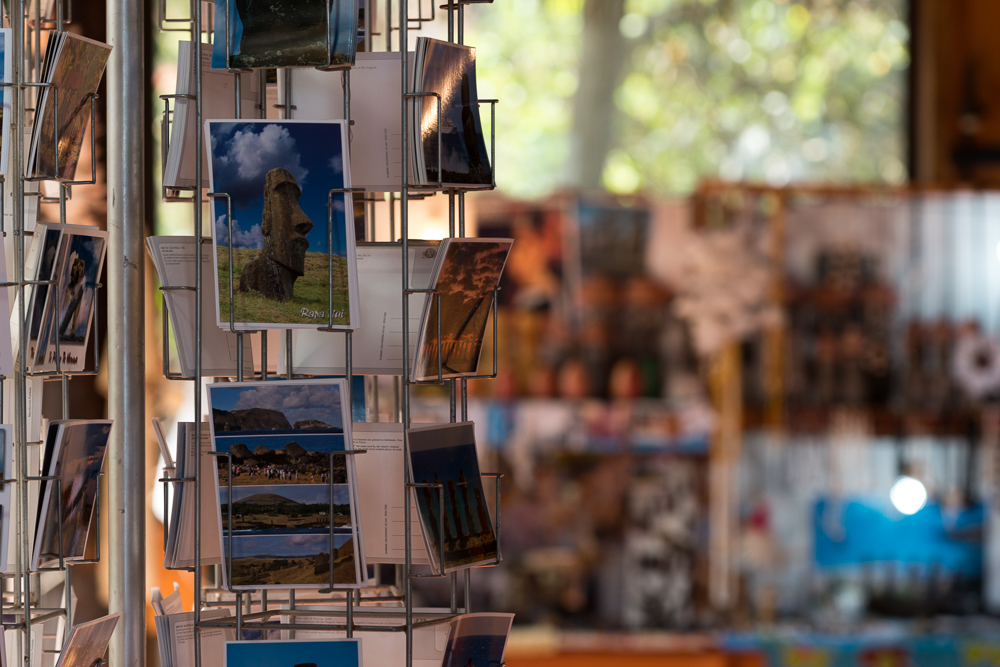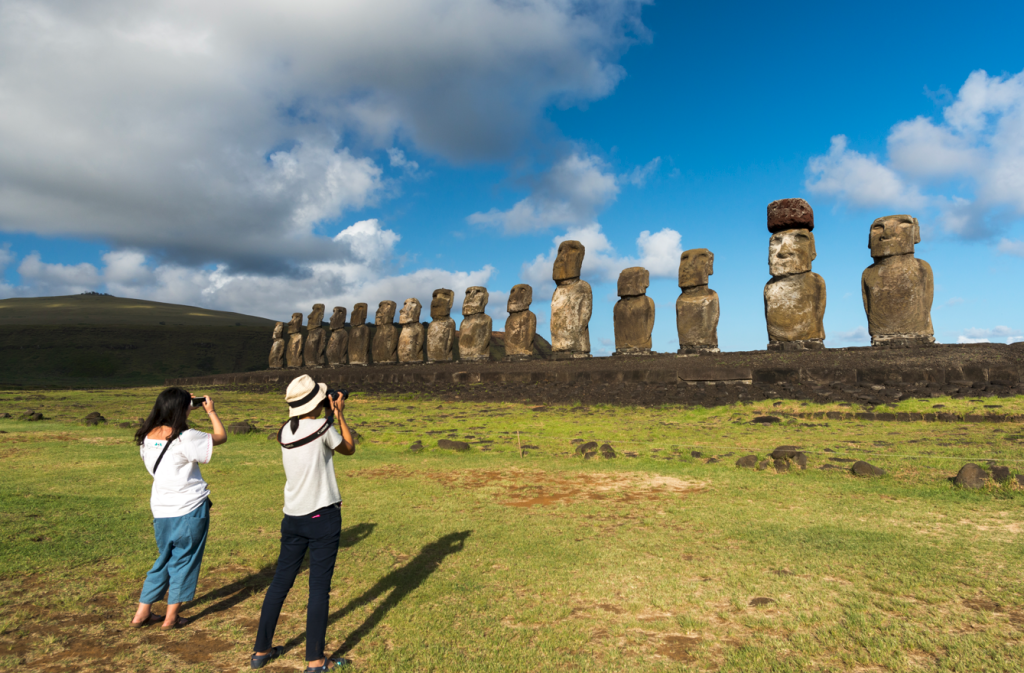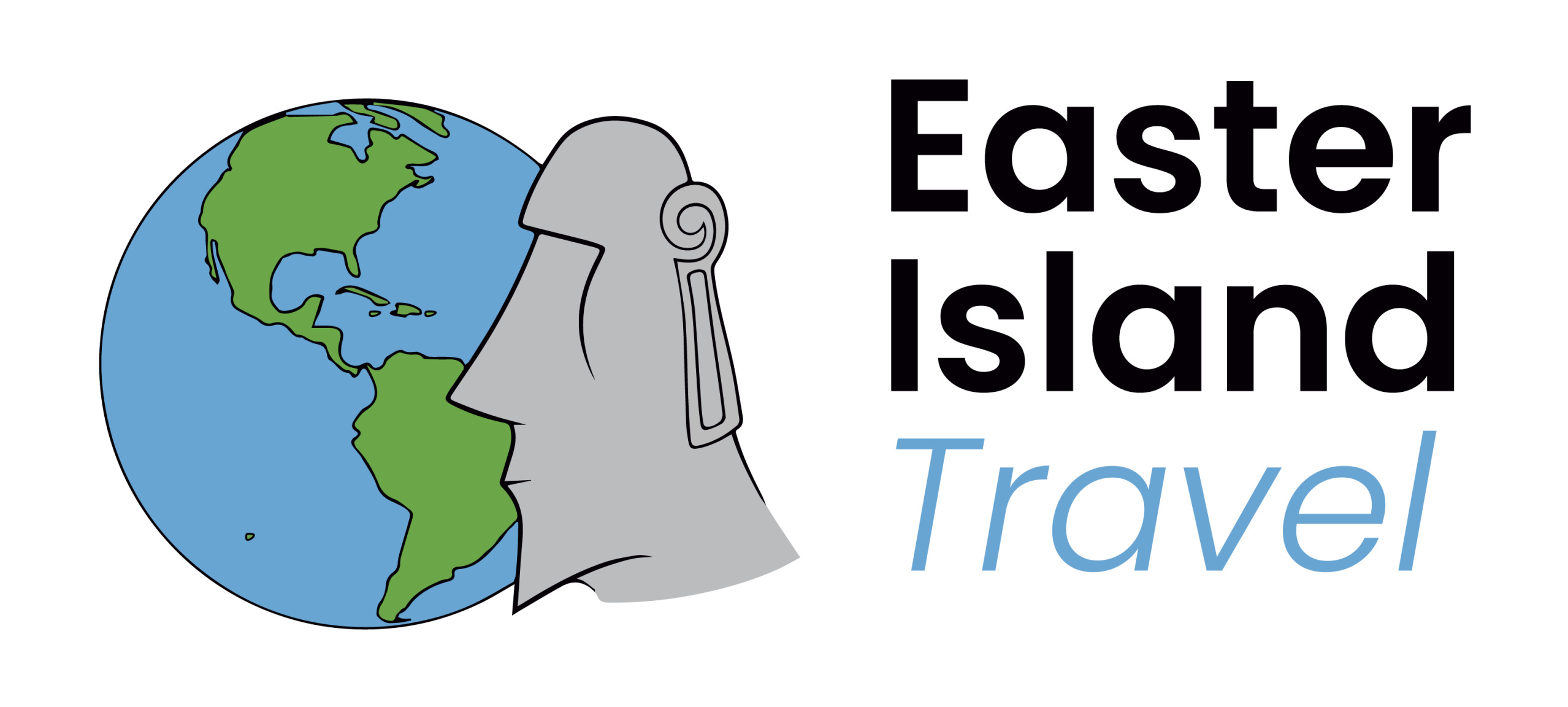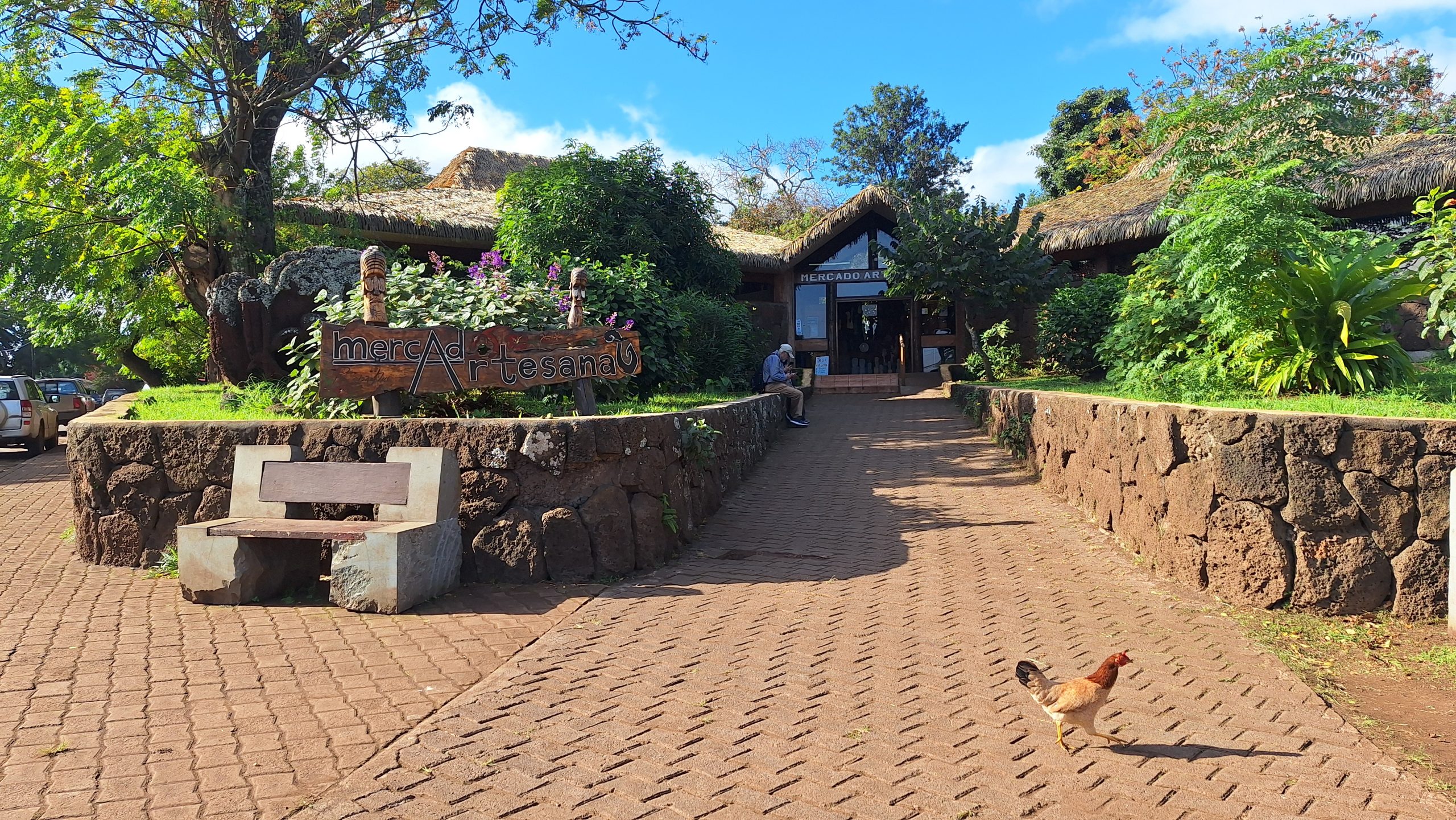Nestled between the cliffs of the west and the deep blue of the Pacific Ocean, Hanga Roa is much more than just the only inhabited town on Rapa Nui. It is the beating heart of the island, the meeting point where everyday life, ancient history, and the living culture of the Rapa Nui people come together.
With just over 7,000 inhabitants, Hanga Roa is home to essential services for travelers: the airport, banks, shops, restaurants, accommodations, churches, and museums. Yet it maintains an intimate and welcoming atmosphere. Unlike more developed tourist destinations, everything here moves at a slower pace, deeply connected to the land, the sea, and tradition.
Walking through its streets means stepping into a place where the modern and the ancestral live in harmony. At every turn, you might come across a carved moai, a colorful mural reflecting local identity, a market with artisans sharing their work, or a church adorned with wooden religious icons carved in Polynesian style.
But Hanga Roa is not just a starting point to explore the island. It is also a destination in its own right. Along its coast you’ll find restored ahu with moai, volcanic beaches perfect for swimming, natural pools, ceremonial sites, cultural centers, and community spaces where locals gather to celebrate and connect. Visiting Hanga Roa means coming into direct contact with the soul of the island. It’s an experience that goes beyond what you see — you feel it in the air, in the conversations, in the music, and in every encounter with the people who live here.
We invite you to discover its most meaningful corners and let yourself be carried away by its history, the warmth of its people, and the beauty of its landscapes:
Atamu Tekena
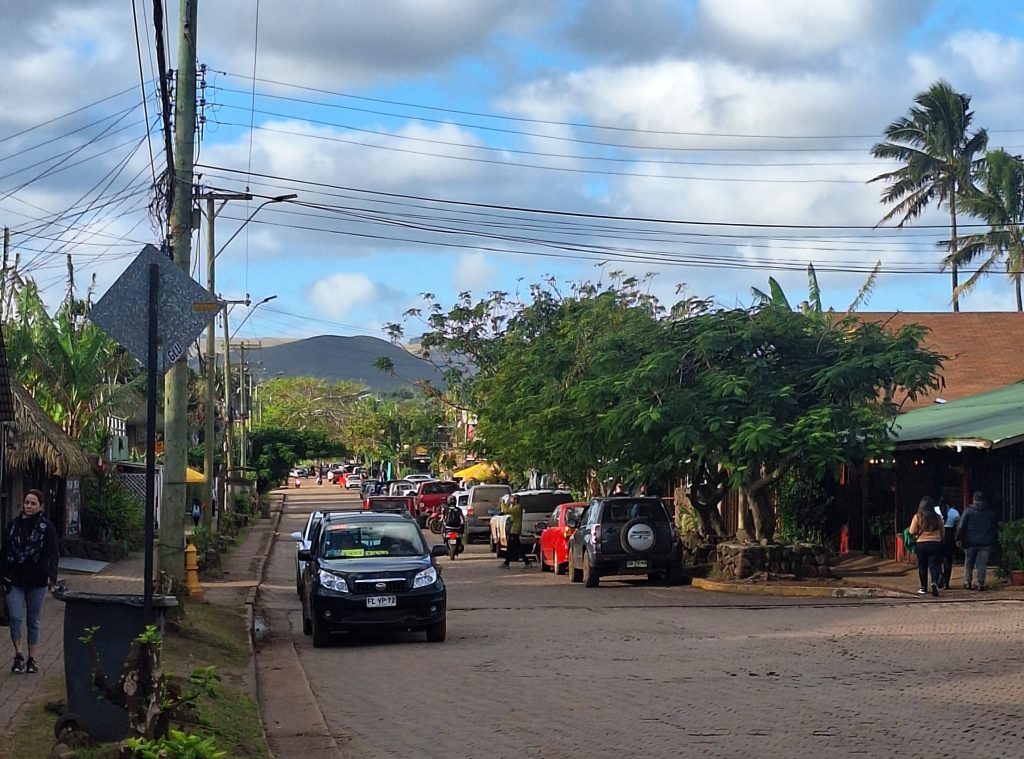
Atamu Tekena is the main street of Hanga Roa, named after the last king of Rapa Nui. It’s the heart of the village—lined with tour agencies, hotels, shops, cafés, and the vibrant rhythm of local life. A perfect place to stroll, grab a coffee, shop for crafts, and truly feel the spirit of the island.
Hanga Piko
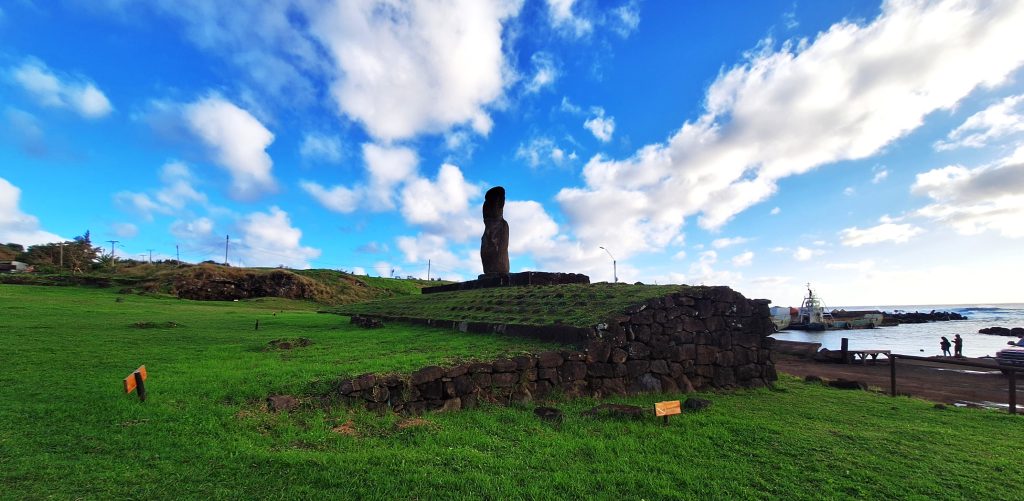
To the south, near the airport, lies the fishing cove of Hanga Piko. Here you’ll find Ahu Riata, with a restored moai facing inland and set against a rugged coastal backdrop. It’s a great starting point for walking along the shoreline toward other iconic sites.
Pea Beach
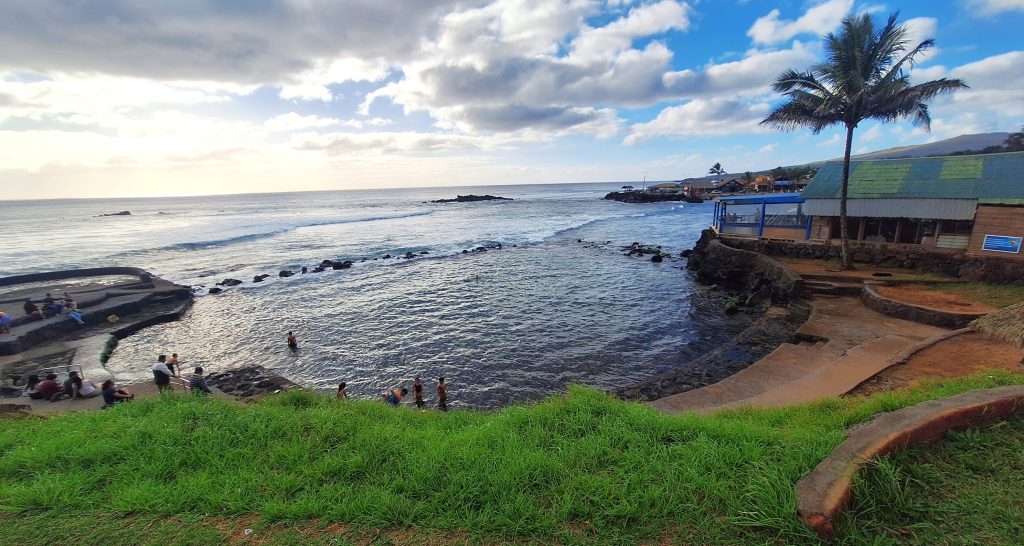
Also known as Papa Hanga Roa, this small beach with dark sand features a natural pool protected by rocks. It’s ideal for swimming and relaxing, especially at sunset when the sky lights up in unforgettable colors — perfect for solo travelers and families alike.
Hanga Roa Otai Cove
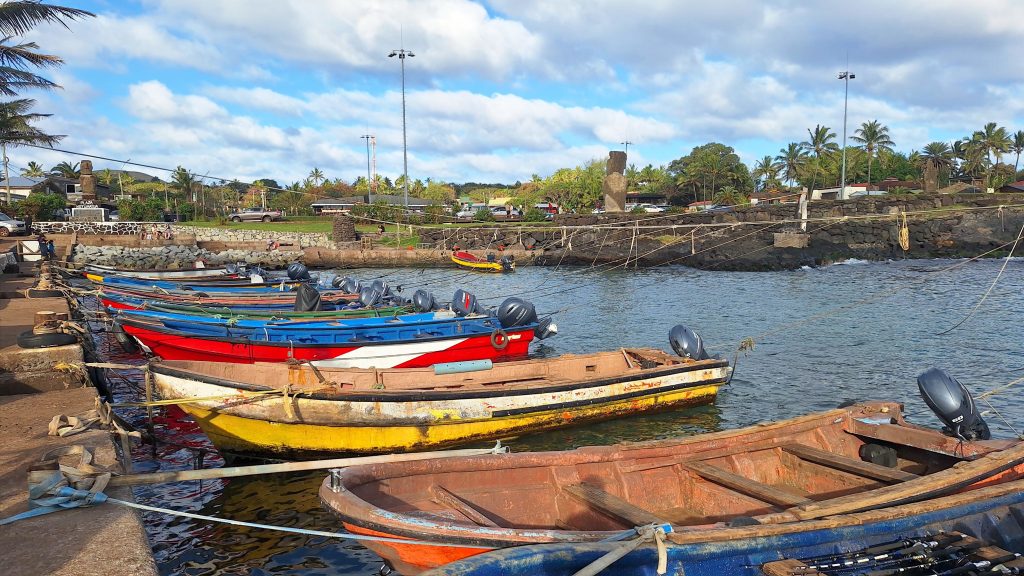
At the main harbor, Hanga Roa Otai offers a lively atmosphere where fresh fish is auctioned, locals gather, and small moai and pukao sculptures are on display. Nearby, Ahu Taurita holds a small coastal moai — a great spot for photos and for soaking in daily life by the sea.
Poko poko beach
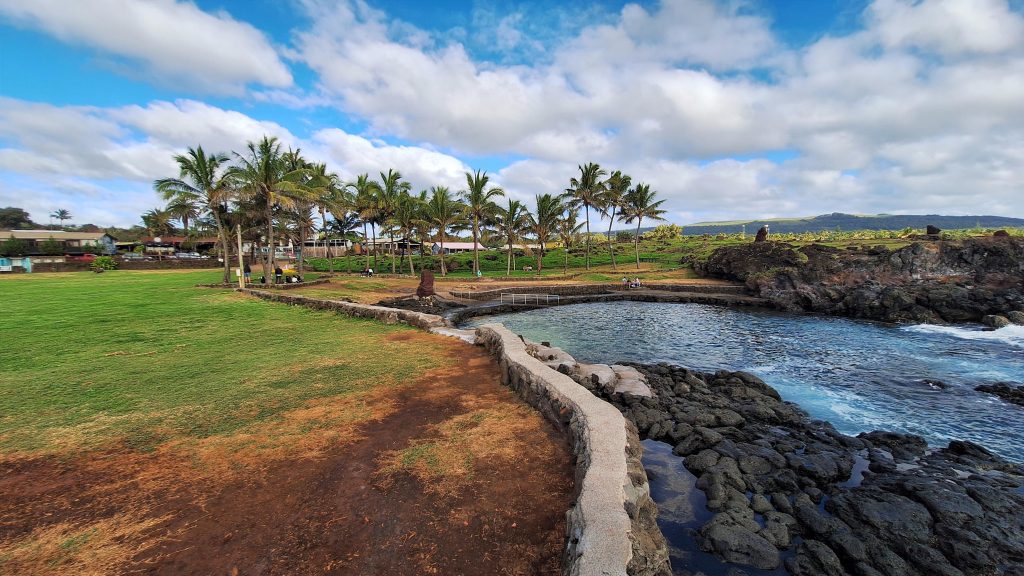
Poko Poko is a natural pool next to Hanga Vare Vare, an open coastal area used for community events such as Tapati Festival performances. It’s a great place to swim and take part in local craft activities in a vibrant communal setting.
Hanga Roa Cemetery
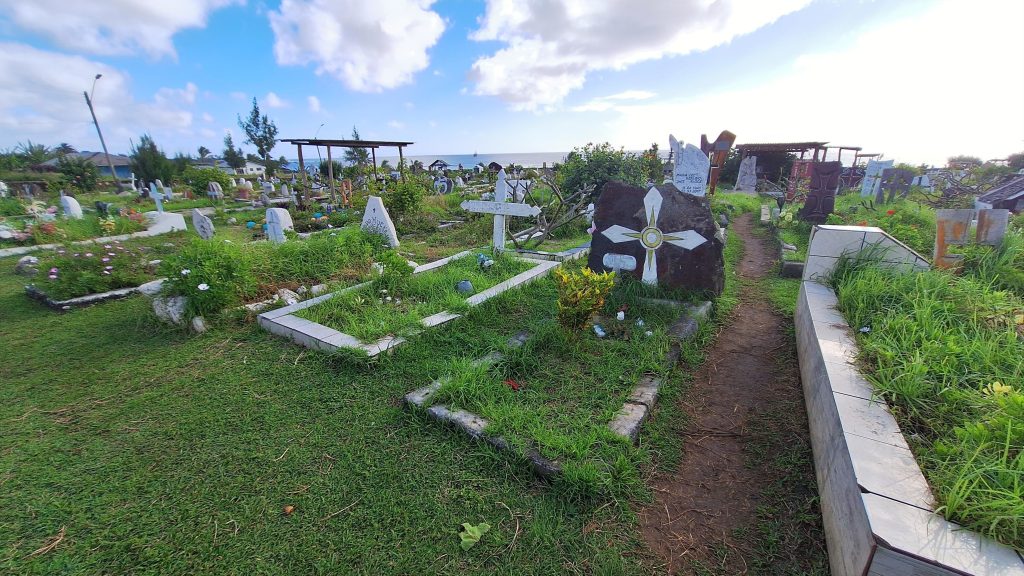
Located right next to the sea and close to Ahu Tahai, the cemetery features tombstones decorated with Rapa Nui and Christian symbols. It offers a quiet space for reflection, with sweeping views of the ocean.
Tahai Ceremonial Complex
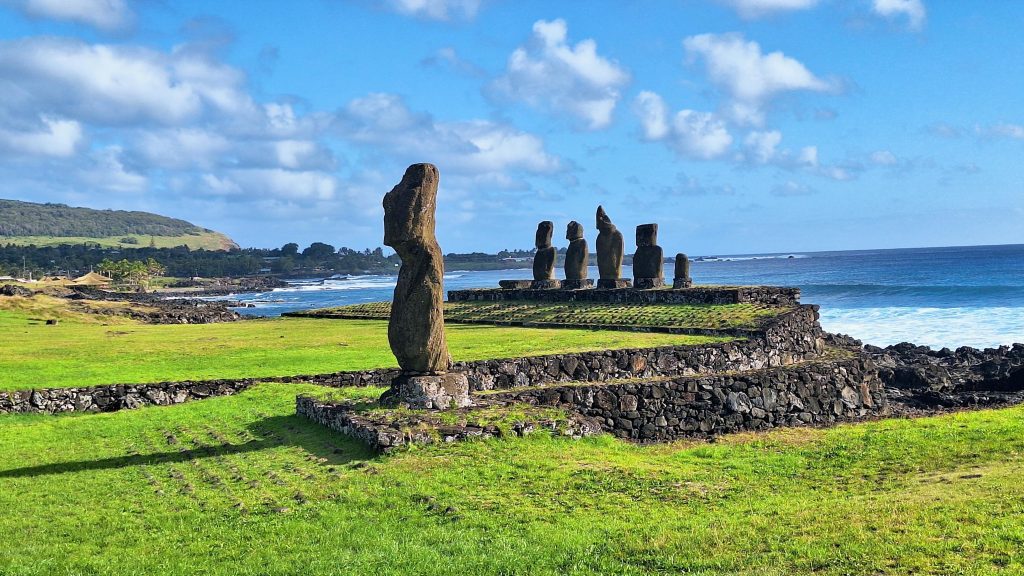
Just 1 km north of the town center lies the Tahai ceremonial complex, covering around 20,000 square meters and consisting of three ahu: Vai Uri (5 moai), Tahai (1 moai), and Ko Te Riku (1 moai with restored pukao and eyes). Built between 700 and 1200 AD, it was restored between 1968 and 1970 by archaeologist William Mulloy. It’s one of the best spots on the island to watch the sun set behind the moai.
Rapa Nui Museum
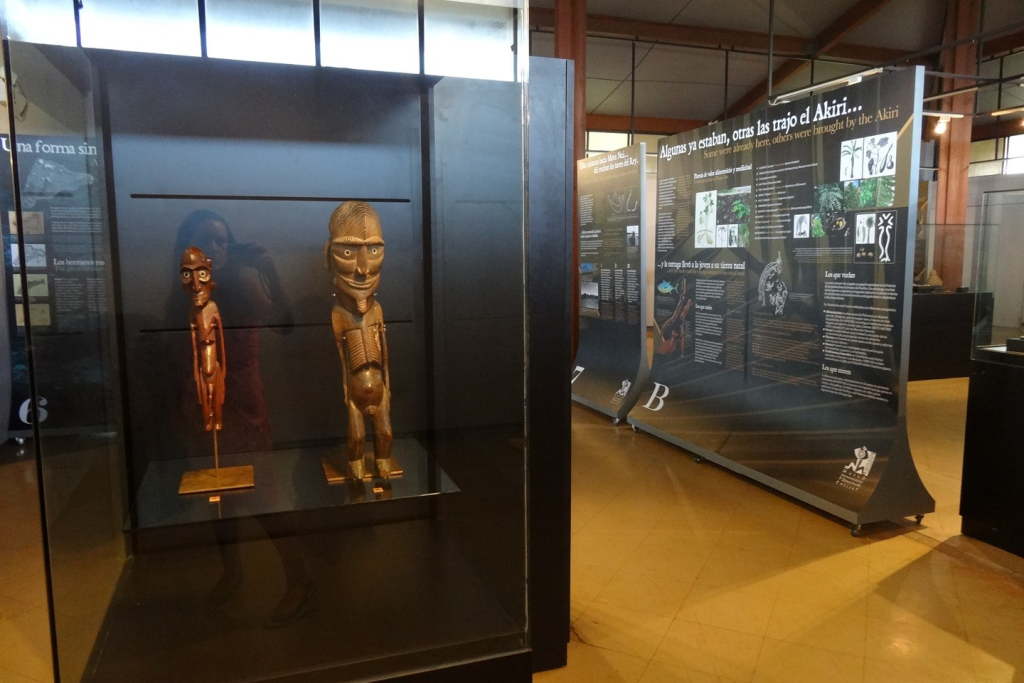
Located between the cemetery and Tahai, this small but important museum holds archaeological artifacts, informative panels about Rapa Nui culture, and rare pieces like moai eyes made from coral. It helps visitors understand how the moai were carved, transported, and revered.
Holy Cross Church
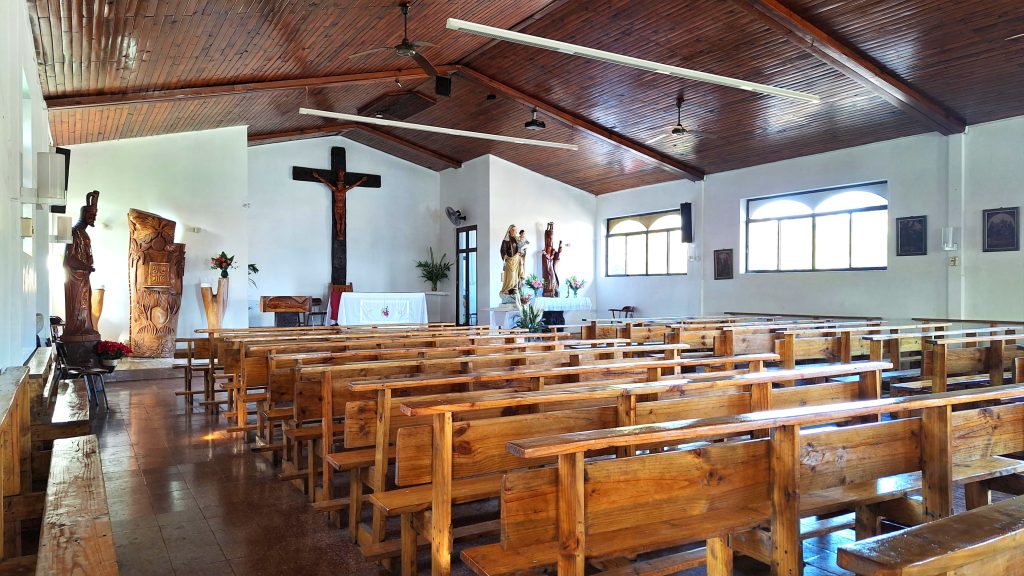
Built in 1937, this church is a clear example of cultural fusion. Its façade and gardens mix Christian and Rapa Nui elements, and its interior features wooden religious imagery carved by local artisans in a Polynesian style. On Sundays, masses are often celebrated with Rapa Nui chants.
Handicraft Market
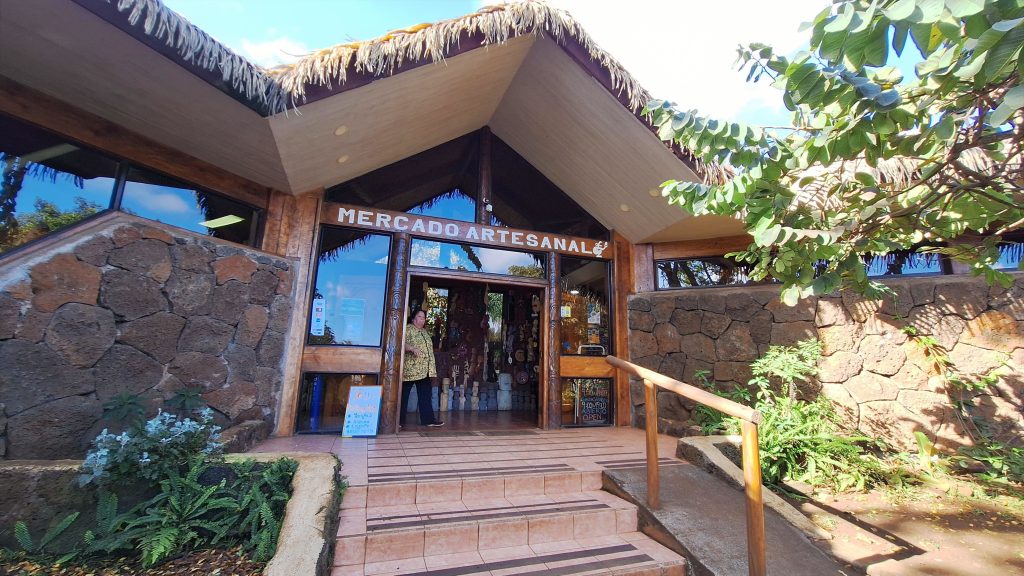
Next to the church and along the town’s main avenues, you’ll find local craft stalls offering wood carvings, jewelry, textiles, and souvenirs. The market is open from morning until night and offers authentic local products — though prices tend to reflect the island’s remoteness.
Suggested itinerary (half-day to full-day):
- Morning: Start on Atamu Tekena, visit the Museum, the Church, and the artisan market
- Midday: Enjoy lunch at a local restaurant, then head to the cove to see fishing boats and coastal moai
- Afternoon: Visit Hanga Piko, Pea Beach, and Hanga Vare Vare
- Sunset: End the day at Tahai with its breathtaking sunset views
- Evening: Walk through the cemetery under the soft light of dusk and reflect by the sea
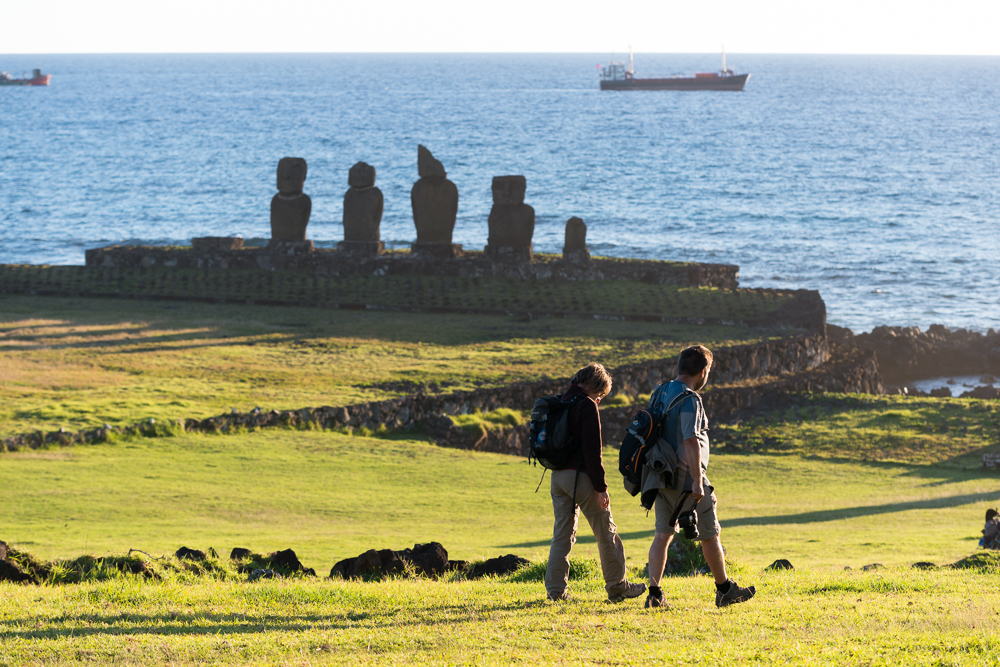
Practical tips
• Local guides: Guides are required to visit the national park and to truly understand the historical and cultural meaning behind each site
• Transportation: 4×4 vehicles, bikes, and quads are commonly rented right from Atamu Tekena
• Timing: Set aside a full day to explore Hanga Roa at a relaxed pace and take part in cultural experiences along the way
